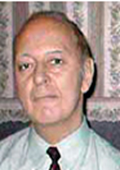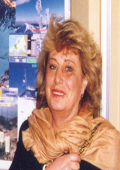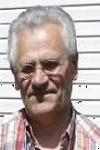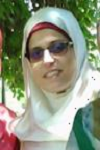ePoster Presentation

Francisco J. Arias
University of Catalonia
Spain
Title: Sandbraking: A Technique for Landing Large Payloads on Mars Through the Use of the Sands of Phobos or Deimos
Submitted Date: 27/1/2017
Biography
Francisco J. Arias is a Reader in Fluid Mechanics and Nuclear Energy at the University of Catalunya-BarcelonaTech. He received his BA in Physics from University of Barcelona and his BA in Material Engineering at University of Catalunya- BarcelonaTech where also obtained his PhD in Nuclear Engineering. He was subsequently elected to a Research Fulbright fellowship at University of California at Berkeley (UCB) and Massachusetts Institute of Technology (MIT) at USA. After, he gained the Beatriu de Pinos fellowship for Catalunya governement, working at the National University of Australia -University of Tasmania and finally at the University of Cambridge (UK) where currently continues as collaborator in several research projects, and the became a Senior Research Associated at University of Catalunya-BarcelonaTech.rnrnDr Arias researches into the application of advanced energy concepts in solar, nuclear and marine energy. He also works with alternative concepts for space applications, rocket and planetary science.rn
Abstract
The basis of a novel technique for spacecraft deceleration and landing large payloads on Mars is outlined. The technique, designated as “Sandbraking†is based in the use of particles of sand transported from a permanent outpost on the Martian moons of Phobos or Deimos. The sand is loaded in the spacecraft waiting in a Phobos or Deimos transfer orbit. During the last stages of the Mars atmospheric descent, the sand is released at once. Although initially both spacecraft and particles of sand have the same velocity -at the moment the sand is released, however immediately after owing to the atmospheric drag differences acting on the vehicle and the micro-metric particles of sand -which are drastically decelerated by the atmosphere, the particles will impact against a suitable pusher-plate located in the front of the spacecraft with a relative velocity equal to the difference of the terminal velocities between spacecraft and particles, and as a result momentum exchange will be generated. This dynamic ram pressure from the stream of particles of sand colliding against the pusher-plate will translate into a prompt deceleration force. Utilizing a simplified geometrical model the collision efficiency –mostly depending on the Stokes number, was approximately fifty percent. In order to smooth the instantaneous deceleration to a level that humans can comfortably withstand-typically about 2 to 4 g´s, some sort of damping system behind the pusher-plate was also envisaged.\r\nThe extra mass of fuel needed to transport the sand from the permanent outpost on the Martian moons of Phobos or Deimos is reasonable low owing to the small Delta -V budget required for those transfer orbits. \r\nThe conclusion from this preliminary assessment is that the proposed sandbraking technique could be an interesting and totally novel solution to the problem of landing large payloads on Mars by using the available resources, and a point in favor of the Phobos scenario for a semi-direct Mars mission.\r\n\r\n

Alexander I. Panferov
The State University of Aerospace Instrumentation
Russia
Title: Development of algorithms for controlling the orientation of a large elastic spacecraft
Submitted Date: 27/03/2017
Biography
Alexander Panferov is a professor of the State University of Aerospace Instrumentation in St.-Petersburg and the Senior Researcher of the International Institute for Advanced Aerospace Technologies. He led many R&D projects in the field of aerospace instrumentation, control systems design for the aeroelastic object, micromechanical gyroscopes and systems. He is a coauthor of more than 12 patents and 100 articles in reputed journals.
Abstract
One of the promising directions for space study and exploration is the design of large spacecraft (SC), equipped with a powerful power block with high thermal output and efficient engines. The desire to distance the instrumentation section from the power plant determines the length of a large spacecraft assembly of 50 meters or more. The main mass of the spacecraft of more than 15 tons is concentrated in the instrument compartment (located in the same place as the payload) and a power plant. Structurally these two massive compartments are connected by a light rod with variable section. The difficulty of controlling such a spacecraft control is determined by its considerable elasticity and complexity of the spatial configuration.\r\nThis paper considers problems of control law synthesis for the spacecraft orientation at large increments of the angular position in the non-uniform gravitational field of the Earth and in outer space. To solve these problems the Pontryagin maximum principle is used. Solutions of problems of accurate stabilization of the spacecraft with errors on the order of tens of arc minutes which take into account the elasticity of all the elements relative to the three axes are presented.\r\nRecommendations are given for construction of actuators for stabilization system with high fuel efficiency. The basis for the synthesis of control laws are mathematical models of elastic spacecraft. These models are obtained based on a special software package, developed by the author over the past 10 years. The software allows to develop a mathematical model of the spacecraft in the form of a system of differential equations with variable parameters or transfer functions for different phases of flight, based on the information about the construction, materials and the elastic properties of separate elements of the construction.\r\nThe work was supported by the Russian Science Foundation under the project 16-19-10381.\r\n

Alexander V. Nebylov
The State University of Aerospace Instrumentation
Russia
Title: Synthesis of a control system for relative motion of closely spaced satellites
Submitted Date: 27/03/2017
Biography
Alexander Nebylov is a famous scientist in the field of motion control with the international reputation. He graduated with honors as an Engineer in Missile Guidance from the Leningrad Institute of Aircraft Instrumentation in 1971. He led many R&D projects in aerospace instrumentation, motion control systems and avionics, and is a scientific consultant for various Russian design bureaus and research institutes. For the last three decades, Dr. Nebylov has been with the State University of Aerospace Instrumentation in St.-Petersburg as Professor and Chairman of Aerospace Devices and Measuring Complexes, and Director of the International Institute for Advanced Aerospace Technologies. He is an author of 18 books (7 in English published in Elsevier, Momentum Press and Wiley) and numerous scientific papers and has also been a member of the leadership of the IFAC Aerospace Technical Committee since 2002. He has the title of Honored Scientist of the Russian Federation.
Abstract
Possible variants for controlling the relative motion of small satellites are considered. The purpose of such control is to create a highly accurate stabilization of an ordered group of satellites operating together on the implementation of the same task. In such groups, control is performed based on measurements of mutual locations of the satellites that are moving at very close orbits. The purpose of formation and rebuilding of a group of satellites is the solution of various practical tasks, such as monitoring the Earth\'s surface, creation of stereoscopic images, construction of large telescopes in space, and a number of other tasks. The purpose of this work is the synthesis of an optimal control system for the center mass motion of active satellites, with the objective of navigation to a specified point in space relative to the reference satellite. We compare two approaches to the synthesis of a control system. The first approach is based on the Pontryagin maximum principle and it minimizes the fuel consumption in the process of the maneuvering. The second approach is based on the minimization of a quadratic quality functional with a terminal term. This work presents results of a comparative analysis of these two approaches. Utilization of this procedure in sequence to all satellites in a group allows one to create any kind of configuration. The results of the simulation of the relative motion with different initial conditions are given. Operability of the proposed algorithms is proved for all possible initial conditions. A necessary condition for the implementation of the proposed algorithm is the estimation of parameters of the relative orientation and navigation (6 parameters). Results of the synthesis of optimal filtering algorithms for primary navigation measurements are obtained. The simulation results are presented and an installation for an actual experiment is described.

Alba Zanini
National Institute of Nuclear Physics
Italy
Title: Liulin-AR spectrometer for radiation environment observation on SABIA-MAR 1 Satellite
Submitted Date: 27/03/2017
Biography
Alba Zanini has her expertise in ionizing radiation dosimetry, both in medical and environmental field. In particular she developed original methods of passive dosimetry techniques for neutron spectrometry and dosimetry, suitable for space application, that were successfully employed on LEO orbits ESA satellites and on International Space Station. At present she collaborates with CONAE and IAA (Istituto Antartico Argentino) for a program of environmental radiatin dosimetry at high southern latitudes, in space and in Argentine Antarctic base Marambio
Abstract
The SABIA-Mar (Satélite Argentino Brasileño para Información del Mar) is a dual satellite joint Argentine-Brazilian Earth observation mission, which objective is to study the oceanic biosphere, its changes along time and how it is affected and reacts to human activity. The Argentinian SABIA-Mar 1 satellite planned to be launched at 702 km sun-synchronous circular orbit in 2021. The platform and the instruments for ocean color observation and sea surface temperature determination are developed and built in Argentina. A Liulin instrument for determination and quantification of the global distribution of the 4 possible primary sources of space radiation outside the satellite: galactic cosmic rays particles and their secondary products, energetic protons in the South Atlantic Anomaly region of the inner radiation belt, relativistic electrons and/or bremsstrahlung in the outer radiation belt and solar energetic particles, generated during solar particles events. The Liulin-AR instrument is a Liulin-type deposited energy spectrometer, which weren successfully used in the period 2001-2016 in: five missions to the International space station, four low earth orbiting satellites and on the lunar Indian Chandrayaan-1 satellite. It is miniature spectrometer-dosimeter, which uses pulse analysis technique to obtain the energy deposited spectrum in single PIN diode with area of 2 cm2 and thickness of 0.3 mm. The spectra are further used for calculation of the deposited in the silicon of the detector dose rate in micro Grey per hour and the flux of the particles. The\r\nLiulin -R dimensions are 10x40x20 mm and weight of 0.092 kg.\r\n

Alina Paranina
Russian State Pedagogical University
Russia
Title: The astronomical nature of the sign
Submitted Date: 27/03/2017
Biography
Alina Paranina is an Associate Professor at Herzen State Pedagogical University of Russia, St. Petersburg, Russia. She uses her professional knowledge in Geography to explain rational primary purpose of ancient and most ancient objects of the cultural heritage. The research in geography of culture began with the interpretation of the drawing of northern labyrinths by means of a gnomon of sundial calendars (Paranin, Paranina 2009).
Abstract
Statement of the Problem: A discussion about the origin of the sign systems began back in ancient times. Modern research in the field of semiotics (the science of signs) is based on the opinion of the artificial nature of the sign - it’s meaning by agreement. The purpose of this study is to justify the astronomical source of the ancient graphic signs – sunlight and gnomon of sun-calendars.\r\n\r\nMethodology & Theoretical Orientation: The author\'s navigational concept of information modeling of the world establishes cause-effect relations in the system of \"signs of nature – signs of culture\" on the basis of solar navigation technologies in space-time.\r\n\r\nFindings: Modeling (mathematical calculations) and observation of the gnomon\'s shadow provide graphical forms that coincide with the known solar signs and signs of modern alphabets. The shadow of the object in the form of a \"T\", turned by the crossbar to the north, is symmetrical at the moments of the passage of the sun through the points with azimuths of 90Ñ” and 270Ñ”, and only at noon it turns into a straight line (in the conditions of the polar day – at noon and at midnight). The rest of the time, the shadow moves clockwise from west to east in a form resembling the letter \"Г\", and its sequential drawing gives a solar sign. The Gnomon in the form of \"Г\" (\"7\", \"?\") creates a curved shadow at any time, except for noon. Staffs in the form of a hook are known from archaeological materials of Russia (Oleny Island, Karelia - 3-4 thousand years, Oleniy Island, Murmansk Region - 6-10 thousand years, man site Sungir, Vladimir region-25 thousand years). The tradition of installing navigation crosses has been preserved in the North up to the present days.\r\n\r\nConclusion & Significance: The reading of the name of the ancient solar sign \"swastika\" (sva- \"light\" (in Russian – “svetâ€) and “stik†– stick), which was proposed by us in 2010, has been confirmed. Solar technologies for the use of ancient objects have been defined: the Taul of the Island Minorca (Bolerian Islands), megalithic complexes of the South-West of Turkey (Gebekle-Tepe and others). The signs of a sundial-calendar are specific in content, but they are abstract in form, so they could be a factor of sapientation. Sun energy could become the basis of signs-knowledge, because it is the basis of the spatio-temporal organization of the Earth\'s geographic envelope, including the reproduction of renewable resources and the operation of the light signal system. Thus, the signs of culture can be regarded as elements of the system of adaptation and as a model of geographical space-time.\r\n\r\n \r\n\r\nA – Winter solstice: Shadows lie in the northern sector of the site because sunrises/sunsets occurring the southern half of the horizon; \r\nB – Spring and autumn equinoxes: Shadows form a line of W-E; \r\nC – Summer solstice: Shadows lie in the southern sector of the site.\r\n\r\nFigure 1: Scheme of the areas covered with a shadow in the days of solstices and equinoxes separating the astronomical seasons of the year (the arrow shows the direction to the geographical north, the gnomon in the horizontal projection is the point, the shadows at the sunrise / sunset moments are excluded - for scale enlargement)\r\n\r\n\r\n


